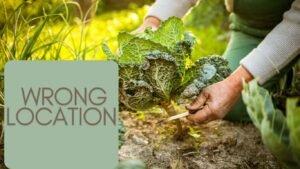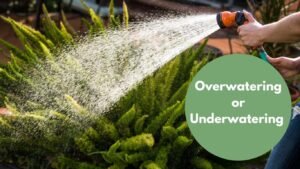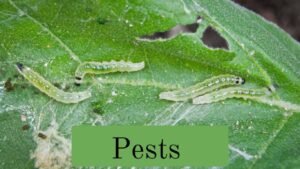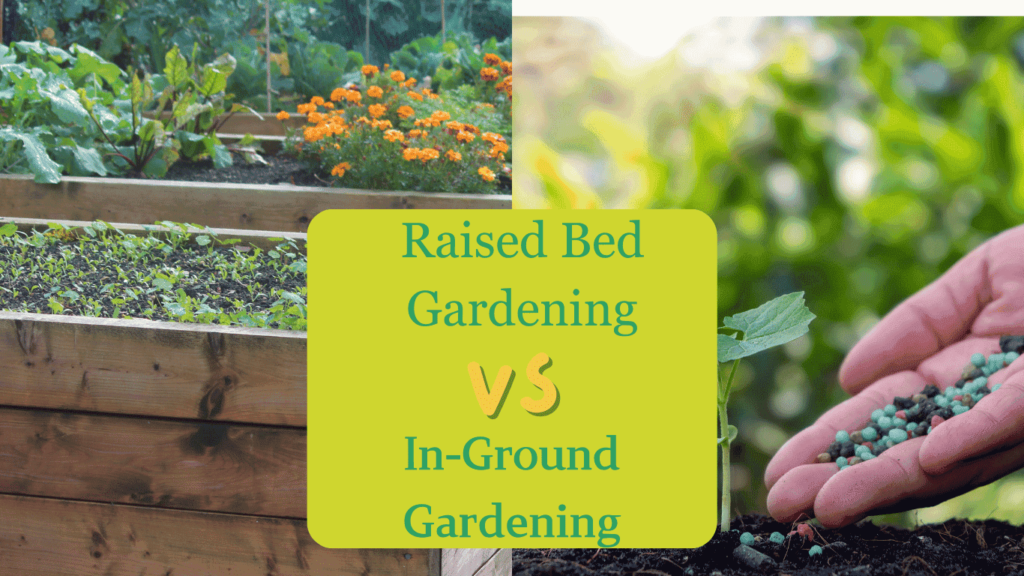Gardening is one of the nice hobbies that you can have. However, beginners who start gardening for the first time make many mistakes. That’s why it can be overwhelming for them.
So, in this article, I will tell you 13 mistakes that most beginners make. Even I made many mistakes when I started gardening for the first time. I didn’t know how much to water when to water, where to place my plant for better growth, why leaves were changing color, etc., and many more mistakes.
But I should thank my grandfather and my mother, who taught me many things about gardening as they have a farmer’s background. So, you should also know about these mistakes if you are a beginner or even an experienced gardener.
13 Common Gardening Mistakes for Beginners to Avoid
There are many mistakes that a gardener makes, even those who are a little bit experienced. However, there are 13 of the most common mistakes that almost every beginner makes. If you avoid them, you can actually thrive in your garden. So let’s explore them one by one.
1. Choosing the wrong location

That’s the first mistake most gardeners make. They don’t choose the right location for gardening.
Well, you should remember one thing: most plants need at least 6 to 8 hours of direct sunlight to flourish.
So, before planting any plant, you want to look at the place where your plant can get proper sunlight every day. Besides this, soil drainage is also important.
You won’t like your plant to sit in soggy soil. And you can check drainage in a simple way.
You first have to dig a hole and fill it with water. If the water doesn’t fully drain within 12 hours, this area is not good for gardening. You will need to fix the problem here. It can be like tilling the ground again or using raised beds or containers instead of in-ground gardening.
Also Read: How to Choose the Best Location for Your Garden
2. Overcrowding Plants
Overcrowding is another common gardening pitfall. However, it’s fairly easy to avoid with a little know-how.
You should remember that every plant has different space requirements based on its mature size. For example, tomato plants generally need around 2 feet of space between them to get proper air circulation and root development.
So, you can’t have a new tomato plant just 4 to 6 inches away from another tomato plant, etc. It is overcrowded. You can’t do that for better growth. If you do so, your plant will not grow properly.
And I’m not just talking about tomato plants. It happens with every plant. But not some green or leafy vegetables like coriander or lettuce.
However, I recommend you create a detailed garden layout before planting. It’s a nice way to know how many plants you can have in a particular space.
Because you will know the size of your garden layout and the size of your mature plant.
You can also read about the plant on seed packets or plant tags. This will help you in planning the layout.
3. Ignoring Soil health
Another mistake that people make is that they ignore their soil health.
Well, we have to understand one thing. Soil is like a home for plants where it lives. So it needs to be in good condition and nutritious.
You can test your soil pH. If you are newly starting a garden, every plant thrives in different soil pH ranges. And when you already know the soil pH, you can plant accordingly. Or you can adjust it, too.
Besides pH, it is also important to build your soil fertility and organic matter content. You can add compost, aged manure, and other nutrient-rich amendments as they can improve your soil structure, which is very important for your plant.
Also read: How to Prepare Soil for Vegetables, Flowers & Fruits Garden
4. Overwatering or Underwatering

Even I made this mistake when I started gardening. I used to believe that if I provided too much water to my plant, it would grow faster because it was getting too much food, and water was food for it. But I was wrong. And now I know it was not just with me. It is a mistake that many other people make besides me.
However, you shouldn’t make this mistake. Overwatering and underwatering are both bad for plants. Instead of frequent watering, deep watering is still a far better option. Overwatering can suffocate roots and lead to all sorts of issues like fungal disease, leaf changing color, etc.
Sometimes, your plant’s leaves will start turning yellow because of overwatering. If you do not provide too much water, they will again turn yellow, brown, and crispy, and eventually, they will start falling off.
However, you can fix this issue by providing moderate water. To provide the right amount of water, I suggest you use a moisture meter. Or simply, you can stick your finger into the soil.
If the top 1 or 2 inches is dry, then it’s time to provide your plant water. When you water, make sure to soak the soil until it’s moist a few inches down.
But how much water you should provide depends on the conditions. For example, in winter, they need less; in summer, they want more. Plus, it also depends on your plant’s type, size, soil composition, etc. So, the simple thing is touching the soil with your finger and getting an idea of whether you should provide water or not.
5. Not understanding plant needs
Every plant has different needs and requirements, which you have to understand. And here is what most people make: they don’t understand their plant needs.
Even though I am a gardener, I always research the plant’s requirements before even adding it to my garden.
I suggest you a strategy. You can plant your plant with other similar plants. For example, drought-tolerant plants like Lavender, Rosemary, and succulents can thrive together in the same area. that receive full sun without asking you for too much water. Pairing them with plants that require constantly moist soil
In simple words, plants like lavender and rosemary can thrive in the same conditions and environment, like full sun and less water. On the other hand, you can’t keep lavender and rosemary with those plants that want full sun and more moisturized soil, like tomatoes, cucumbers, etc., who want water again and again.
You see, they both have different requirements; one of them wants more water, and the other one doesn’t. That’s why you have to understand your plant’s needs.
6. Planting at the wrong time
Timing is very important when it comes to gardening. If you are planting your plant at the wrong time every year, you will never get good results.
Because there are seasons and times for most plants, of course, there are plants that can be grown every time in a year. But still, most need a specific time or the right time to grow.
I suggest you follow local planting calendars according to your region. You have to understand your own climate zone. So it’s important you do a little bit of research.
In America, there is a different season in March. In Australia or India, it’s different.
Besides this, seed packets and gardening apps also provide planting time. Depending on your location.
However, you can simply search for plants depending on the current climate. Like fall, winter, or summer, etc. For example, during cold weather conditions, you can have crops like lettuce, peas, and broccoli.
You just have to plant several weeks before your last expected spring forest. During summer, you can plant plants like tomatoes, peppers, etc.
Planting cool-weather crops like lettuce, peas, and broccoli during summer or planting tomatoes and peppers during winter will not give you good results. That’s why timing is very important.
Many people make mistakes. They don’t even know when to plant and what they should plant in what climate.
Also read: How to Start a Vegetable Garden: A Beginner’s Guide
7. Neglecting weeding
Neglecting weeding is another common gardening pitfall, because of which your plant has to struggle a lot.
Weeds are actually competitors for your plant. They steal all valuable nutrients and moisture from your plant. And that’s why your plant cannot grow properly.
For example, you are growing a tomato in a container, and you can see other unwanted plants emerging from the soil. In that case, you have to remove them. Otherwise, they will keep consuming all nutrients present in the soil and water.
On the other hand, your actual tomato plant will not get as much nutrition as it deserves.
One of the best ways to prevent weeding is consistent mulching. You can apply mulch around 2 to 4 inches of organic material.
You can make a layer of material like straw, wood chips, or leaves around your plant to block sunlight and prevent weed seeds from germinating.
It will also help your soil retain moisture, and it will also reduce the frequency of water provision. Besides this, you should still do some regular hand weeding or checking. If you see any unwanted plant emerging, you should remove it.
By the way, I follow it, and I want to recommend to you that once a week, removing weeds should be your weekly garden maintenance routine.
8. Overusing or misusing fertilizer
Many gardeners make the mistake of applying too much synthetic quick-release fertilizer, which is not good. Because it can burn your plant roots and lead to excessive unhealthy growth.
That’s why I suggest you go with slow-release fertilizer or organic alternatives like compost.
Compost is a nice nutrient-rich soil amendment that I personally use. It gradually feeds plants over time as it breaks down.
It’s a nice way to naturally build up your soil fertility without risking over-fertilizing. Besides this, if you don’t want to focus on compost, you can also go with slow-release fertilizer.
They are great options because they also provide a steady supply of nutrients rather than a big sudden boost. Unlike synthetic quick-release fertilizer.
And if we talk about feeding your plant, then you can start with light fertilizer or observe the result before adding more. You can monitor your plant’s growth and color. If you see your plant is thriving, you don’t have to feed your plant with fertilizer. Slow and steady feeding is always the right way to go for healthy plant growth.
9. Forgetting to plan for pests

Forgetting to plan for pests is a very common mistake that many gardeners overlook. Pests like Aphids, slugs, or even hungry deer. They all can attack your garden.
However, there are many natural, non-toxic solutions to keep them away from your garden. For example, companion planting can help deter pests; you can plant mint plants near your main plant.
Besides this, you can also have a physical barrier like row covers or fencing, especially for larger critters like deer. Moreover, you can also introduce beneficial insects like ladybugs and lacewings, as they can fight the Aphids population.
If there are already pests and you want to control them, then you can use products like Neem Oil or Diatomaceous Earth. As they are organic options to fight beasts, they target beasts without harming your plant and the surrounding ecosystem.
10. Lack of Patience
Lack of patience is definitely another common pitfall for many gardeners. I know, as a gardener, that many people, especially beginners, are eager to see immediate results.
But the truth is that gardening will take time. It will take time to see the yield of your crops. You can’t see them overnight.
One of the best tips that I can recommend in your gardening journey is that you need to be patient. You have to recognize that every garden and every growing has different seasons, times, etc. So, don’t get frustrated.
If you are in a hurry to see the result, then you can get a plant from the nursery instead of growing it from seeds. Because a plant will give you fruits or vegetables faster than growing it from seeds, especially fruits, vegetable plants aren’t available in most nurseries.
11. Not Rotating Crops
Not rotating crops is another gardening mistake that will definitely impact the long-term health of your garden. And there are many reasons why you should consider rotating crops.
- Rotating crops will prevent soil depletion because every plant has different nutritional needs. That’s why if you rotate them, you can ensure the soil doesn’t get depleted of key nutrients over time.
- It also breaks pests and diseases, as they target specific crops.
Here’s a simple example of basic crop rotation:
- Year 1: Leafy greens (like lettuce or spinach)
- Year 2: Root vegetables (like carrots or beets)
- Year 3: Nightshade family (like tomatoes or peppers)
By doing so, you are diversifying types of plants in the garden bed and also giving your soil a chance to replenish and disrupt any problematic yeast population.
12. Skipping mulch
Skipping the mulch is a big missed opportunity in the garden. I can’t even tell you how many benefits you are avoiding if you are not applying mulch layers.
If you apply just a 2-4 inch layer of mulch around your plant, it can help retain soil moisture, cutting down the frequency of water, especially if you want to have it during hot and dry spells. Besides this, mulch also blocks light from reaching the soil. That’s why it also prevents weed or unwanted plant growth.
Mulch also plays a very big role in moderating soil temperature and keeping your plant’s roots cool in summer and insulated in the winter season. This temperature regulation will promote a healthy root system. Now you see how beneficial applying mulch is, which many people avoid
There are many mulch options you can choose from, like straw, compost, wood chips, or even shredded leaves.
13. Not Pruning or trimming plants
Regular pruning and trimming is important when you are doing gardening. It helps maintain healthy plant growth.
If you are not trimming or pruning, your plant will grow wild, and it will lead to many problems like overcrowding, which will reduce airflow, disease, pests, infestations, etc. That’s why pruning is very important.
Conclusion
Mistakes when you are a beginner in gardening are common. Every gardener makes it. Even I did. I used to feed my plants a lot of water, which caused many problems, such as root rot. My plant’s leaves were also used to get different colors, like yellow. But I learned all these things over time, and now I don’t face any problems.
So it’s ok to make mistakes. You have to enjoy gardening. If you follow all these 13 gardening tips for beginners, which I have shared, there is a high chance you won’t make any mistakes, and your plant or garden will thrive.

